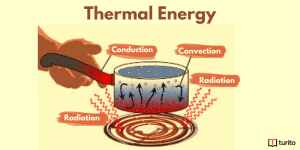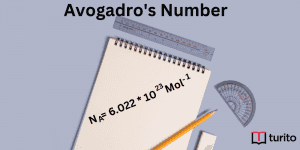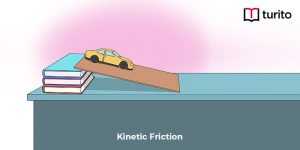Halley’s comet is possibly the most well-known Earth’s history. A person could see the comet twice in their lifetime because it is a “periodic” comet that orbits the Earth every 75 years. Halley’s comet was last seen in 1986 and is anticipated to show up in 2061.
Halley’s Comet
The Halley’s comet meaning: The Halley’s comet, also known as 1P/Halley, is given its name after an English astronomer, Edmond Halley, who analyzed claims of a comet orbiting the Earth in 1531, 1607, and 1682. He concluded that the three comets were just one comet that kept coming back, and he forecasted that it would do so in 1758. Halley estimates that at least some comets revolve around the sun. Despite Halley’s passing, the comet was named after him, and the comet appeared as he anticipated.
History of Halley’s Comet
As per the European Space Agency, Halley’s Comet, often known as Comet Halley, was first observed in 239 B.C. Wen Hsien Thung Khao and Shih Chi’s histories carry observations about the comet’s approaches made by Chinese astronomers. Another study, based on simulations of Halley’s orbit, dates the first observation to 466 B.C. when the Ancient Greeks would have been able to see it.
It’s likely that the Babylonian documents, which are currently kept at the British Museum in London, noted Halley’s return in 164 B.C. and 87 B.C.
The most well-known sighting of Halley took place just before William the Conqueror invaded England in 1066. William thought the comet predicted his success. But astronomers regarded each Halley’s Comet apparition at the time as a distinct occurrence. Comets were frequently interpreted as an omen of a major catastrophe or transition.
Orbit and Origin of Halley’s Comet
The Kuiper Belt is thought to have been the origin of Halley’s comet. Some fragments of ice and rock left over from the solar system’s creation around 4.6 billion years ago are driven deeper into the solar system and become operative comets. Halley’s comet has an orbit that lasts 20 years or less, making it a periodic or short-period comet.
Compared to long-period comets from the Oort cloud, which have orbits that endure for thousands of years. Halley’s comet orbits the sun in a highly retrograde and elliptical pattern. It, therefore, revolves around the sun in a different direction than the planets. Its velocity is greatest to the earth because of its retrograde orbit.
Halley’s Comet 1910
People’s assumptions regarding Halley’s comet in 1910: The comet would blow everyone to death!
On May 6, 1910, Halley’s comet approached Earth’s orbit, and according to certain superstitious people, Halley’s comet assassinated England’s, King Edward VII. Nobody could say with certainty how it happened, but it did. It also caused other infractions. The French believed it was responsible for the Seine’s inundation, while the British believed it was a sign of an impending German invasion.
Throughout history, there has always been a moment of anxiety when comets reach the sun’s orbit and burn off into elongated, ominous tails. However, people got creative with their concerns in the months leading up to Halley’s passage of Earth on May 19, 1910. A few months previously, the New York Times also published that an astronomer had predicted the comet would abruptly end life on earth!
Halley’s Comet Last Seen: Halley’s Comet 1986
On April 11, 1986, millions worldwide turned their eyes to the night sky to greet Halley’s comet. The cosmic traveler, comet Halley, comes once every 75 or 76 years, arriving closest to earth on that particular day. The comet had traveled from the extreme regions of the solar system, approaching the Earth on November 27 of the previous year at a distance of 93 million kilometers and approaching its perihelion (nearest approach to the sun) on February 9, 1986. Due to its proximity to earth—only 63 million kilometers away—it was best visible during the return trip.
Halley’s comet’s 1986 visit coincided with the beginning of the Space Age, making it an ideal time to examine Halley thoroughly and scientifically. The European Giotto, the Japanese Suisei and Sakigake, the Soviet Vega 1 and 2 missions, and other satellite and ground-based instruments provided unprecedented documentation of the comet’s composition and structure.
Photographs of Halley were also taken by NASA’s International Cometary Explorer, which has been in orbit since 1978 and is expected to be 17.3 million miles (28 million kilometers) distant from the comet.
Unlike prior occasions when its apparition was linked to huge catastrophes, the comet’s transit in 1986 was far more peaceful. During the last Halley’s comet visit, in 1910, people were terrified of the world’s end. It was a scientist who spread the catastrophic theory.
According to a February 8 article in The New York Times of that year, the Yerkes Observatory at the University of Chicago had discovered lethal cyanogen gas in comet Halley’s tail, which would travel over the earth. Camille Flammarion, an astronomer, also made a gloomy prediction: “The cyanogen gas would infiltrate the stratosphere and ultimately wipe out all life on Earth.”
| Interesting Facts:
Whenever Halley circles the inner solar system, its nucleus emits rock and ice into the solar system. This debris stream causes the Eta Aquarid meteor shower in May and the Orionid meteor shower in October. |
The Structure and Composition of Halley’s Comet
Thankfully, scientists and space researchers could record the Halley’s comet’s structure and composition on its last flyby in 1986.
The scientists claim that when Halley gets closer to the sun, it releases streams of sublimating elements from its exterior, slightly deviating it from its orbit.
The comet develops an ion tail, a brilliant tail of ionized gas, and a dust tail, a weak tail of tiny dust particles. The ion tail also referred to as a coma (a miniature atmosphere), is made up of volatile substances such as water, ammonia, methane, and carbon dioxide and can be up to 100,000 km in length.
Despite its enormous tail, Halley’s comet has a nucleus around 8 kilometers wide, 15 kilometers long, and around 8 kilometers thick. Its average density is 0.6 g/cm3, and its mass is believed to be 242.5 billion tonnes. The expelled gases contain traces of hydrocarbons and 80% water, 3-4% carbon dioxide, and 17% carbon monoxide.
Upcoming Halley’s Comet, 2061: Viewing Advice
Find a place distant from light pollution if possible. In Bristol, the nighttime temperatures on the 5 and 6 May are predicted to be warm, ranging from 10 to 11°C with a little cloud cover and a low possibility of precipitation. However, checking your weather forecast predictions is always a good idea. Nevertheless, wear warm clothes because you won’t likely be roaming around much.
For about 10 to 20 minutes, lean back on a recliner, a chair, or a mat, and then let your eyes become used to the darkness.
You’ll find that, with time and patience, you get used to noticing the meteor tails as they flash across the sky. Avoid looking at other bright lights during this period, such as your phone. Apply a red screen if you do.
Conclusion
The comet will keep showing up for its regular visits to earth; its next perihelion is July 28, 2061. As predicted, some people are deciding to get ready for the worst, which denotes the end of life. Some people are wondering if they’ll be around to see it.
But among all of its appearances, the tale starring American author Mark Twain may be the most well-known. He remarked in 1909, “I arrived in 1835 with Halley’s comet. I anticipate leaving with it because it will return next year.
If I don’t go out with Halley’s comet, it will be the worst disappointment of my life. There is no doubt that the Almighty has stated: “Now look at these two crazy people; they entered together and must exit together.” So it turned out. The day following Halley’s perihelion, on April 21, 1910, Twain passed away from a heart attack.
Frequently Asked Questions
1. When was the last Halley’s comet observed?
Ans. Millions of people worldwide turned their eyes to the night sky on April 11, 1986, to greet Halley’s Comet. The cosmic visitor, which comes once every 75 or 76 years, came the nearest to earth. The comet had traveled from the extreme regions of the Solar System, approaching the Earth on November 27 of the previous year at a distance of 93 million kilometers and reaching its perihelion (closest visit to the sun) on February 9, 1986.
2. Where is Halley’s Comet presently?
Ans. Halley’s comet is presently in the constellation Hydra as it approaches its aphelion point, the point in its cycle where it is farthest from the sun. The Eta Aquarids will peak on May 6, 2022, at a distance of 5,251.59 million kilometers from the sun. The aphelion is expected to occur in December 2023.
3. When will Halley’s Comet be visible again?
Ans. The 76-year orbit of Halley’s Comet will bring it back to our sky in 2061. Last Halley’s comet, was spotted in the skies in April 1986. It is the only comet with a short period (less than 200 years of the orbit) that is consistently visible to the unaided eye, and Chinese astronomers made the first known observation of it in 239 BC.

Relevant Articles
Understanding Thermal Energy: What It Is and How It Works
Thermal energy is essential to our daily lives, from warming …
Understanding Thermal Energy: What It Is and How It Works Read More »
Read More >>Avogadro’s Number: Meaning, Importance, and More
Introduction The concept of measuring the microscopic particles that make …
Avogadro’s Number: Meaning, Importance, and More Read More »
Read More >>Kinetic Friction – Definition, Laws, Types
Kinetic Friction Kinetic force is a force acting between two …
Kinetic Friction – Definition, Laws, Types Read More »
Read More >>




















Comments: